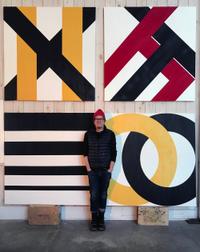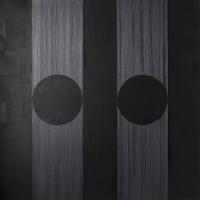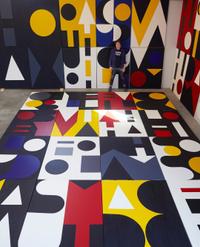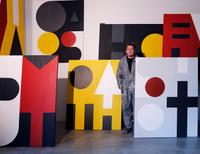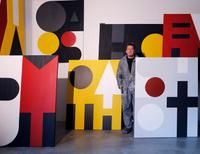Christopher Griffith
Hobo Glyph - viewing soiree : Saturday August 13th, 5-8pm
Hobo glyphs date back to the end of the American Civil War, when men released en masse from their posts as soldiers of both the confederate and union armies, as well as black slaves freed under the emancipation proclamation of 1863 were on the move across America in search of a new life. The most common means of transit was either on foot or more likely by hitching a ride on the elaborate railroad network that defined the american frontier.
I discovered these hobo glyphs many years ago and was initially drawn to what is a very rudimentary though effective means of communication. My process has always been minimalistic and graphic in nature with a tendency to focus on mundane and often overlooked aspects of society in a desire to render them supreme. On the surface glyphs are indiscernible chicken scratch on the side of a wall or lamppost which are most likely invisible to the average passerby. Dig deeper and one understands that these simple scrolls were a well intentioned secret message to fellow travelers which served no purpose to the individual writing them. They were a show of solidarity created by a unique group men living on the fringes of society, who felt a duty to inform their fellow travelers of the potential dangers and benefits of what lay ahead.
With the onset of covid in the spring of 2020, the world was set upside down and normality ceased to exist. The world had been set into a global crisis and we all sat and watched how our respective governments and next door neighbors dealt with the challenges. I thought about where we as a country and a society might be in a month, in a year… or two. It is the single greatest crisis that the world has experienced since the end of the second world war and as an ex-biochemist of infectious diseases, I knew that it was bad. I also knew it had been a long…long time coming and that normal was not coming back for awhile, if ever.
The chronic hardship of people on the street or on the verge of living on the street seems all the more acute. The selfless messaging of the hobo code represents a form of human unity that facilitated a collective survival at a time of incredible social upheaval. This code developed over a hundred years ago seems very relevant to our present dilemma. The idea of a common good and desire to help others in times of need is desperately needed in this crisis that few could have imagine and fewer still have ever experienced in their lifetime.
![[object Object]](/_gatsby/image/402764519519f0a6031587cc99ee6823/5c904daa99202e8141b72e9be85b475d/275441760_702914457755118_7813304142031910466_n.jpg?u=https%3A%2F%2Fimages.ctfassets.net%2Ftyb0j7kr3d4v%2F1cT74x2RCiJ7yiLRMDMynx%2F8b5ca84cb72815e8235fae3b569761a9%2F275441760_702914457755118_7813304142031910466_n.jpeg&a=w%3D270%26h%3D334%26fm%3Djpg%26q%3D75&cd=2023-02-02T17%3A21%3A47.966Z)
